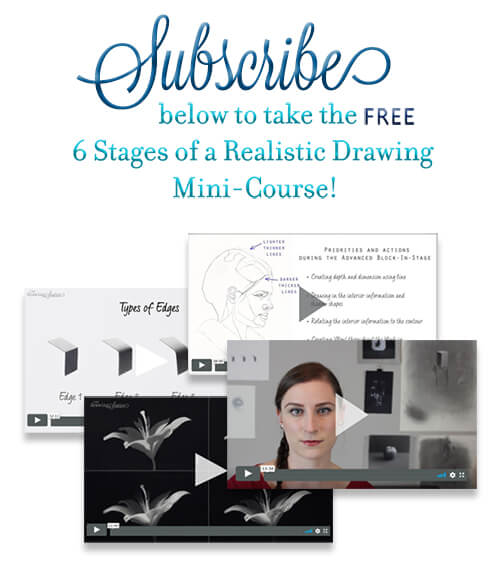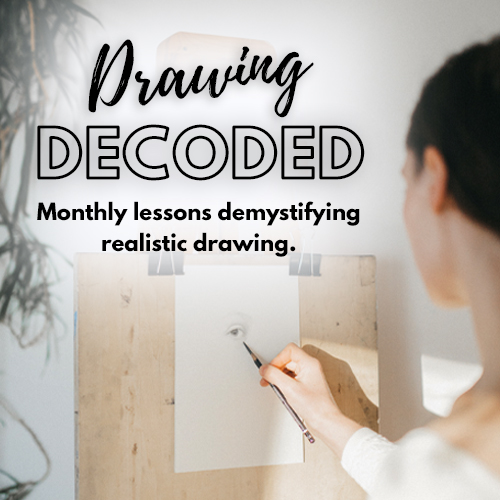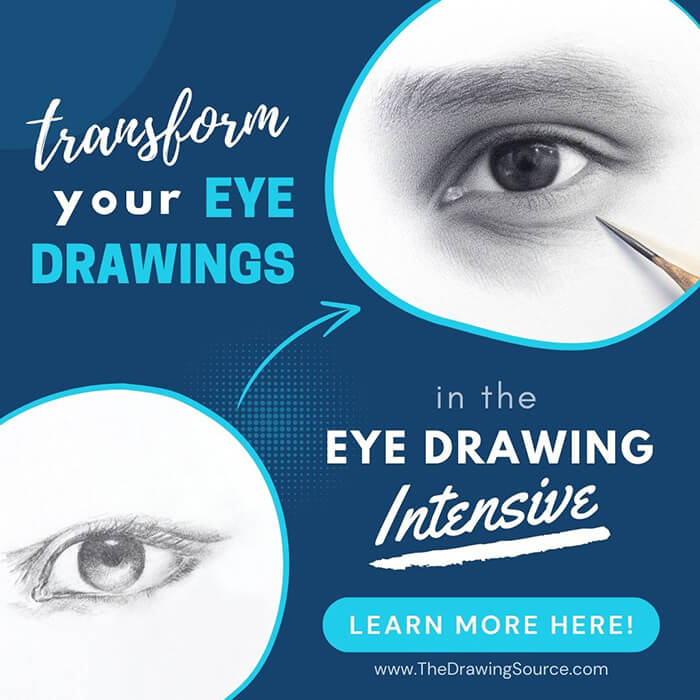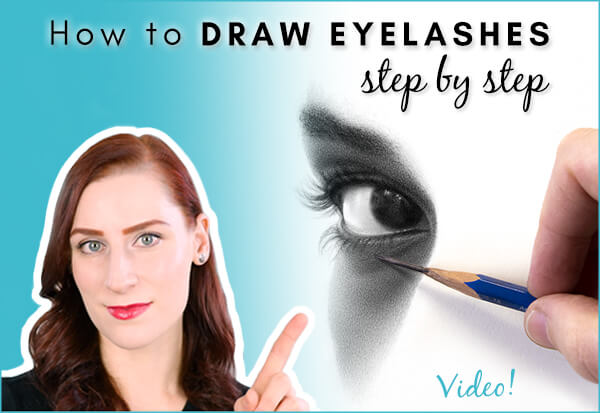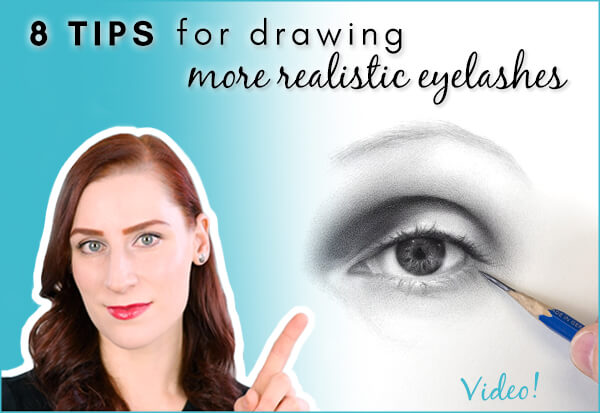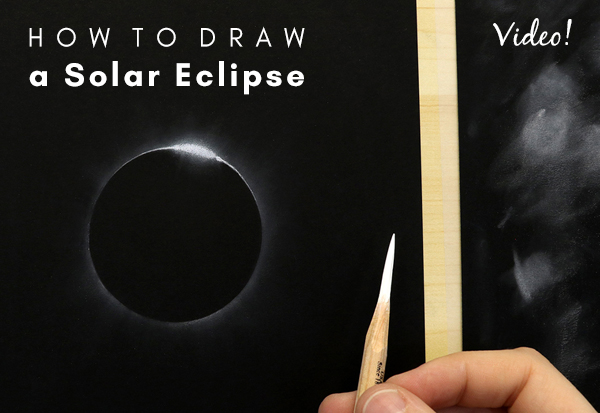- Home
- Drawing Tutorials
- Drawing Ideas
Generate Unlimited Drawing Ideas
with these 5 Exercises
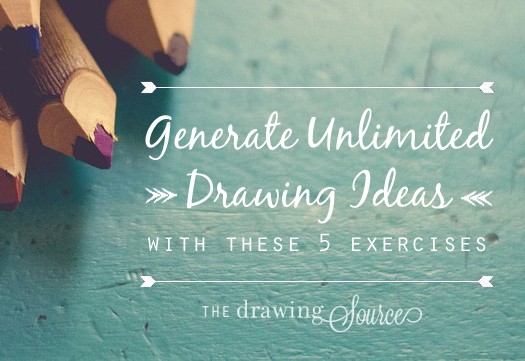
One of the most enjoyable facets of being an artist is feeling the rush of excitement and inspiration of new drawing ideas – when you can’t help but drop everything and run to your easel or sketchbook to catch that fleeting energy and momentum that seems to have appeared out of nowhere.
However,
a drawing practice (or any artistic practice, for that matter) cannot be
sustained if one only chooses to work “when inspiration strikes” with an idea.
What if we learned to cultivate a state of mind and certain practices that would allow us to experience that wonderful rush regularly? Daily even? And, as a result, generate unlimited drawing ideas?
In this article I will present 5 exercises to use to generate unlimited drawing ideas
that are unique to you. Notice that this page is not simply "5 fabulous drawing
ideas" (though you can view 30 ideas for drawing on this page). Because this page presents 5 exercises to use to
generate your own drawing ideas, most
of these strategies require some effort. You can think of them as guided,
internal investigations to use to determine what you truly want to
create or express.
Throughout my education, my favorite professors were consistently those who encouraged me to create works that were increasingly more genuinely "my own", and, as a result, felt like extensions of myself. Instead of projecting their own ideas, opinions and aesthetics onto my work, these professors would find ways of asking questions to illuminate what it was that I truly felt compelled to explore or communicate.
I sincerely hope that these exercises
will help you do just that: to clarify what you are interested in and provide
you with strategies to generate your own, infinite drawing ideas.
5 Exercises to Generate Unlimited Drawing Ideas
Exercise 1: Build upon what you already have
It is easy to assume that in order to create something meaningful we must look outside ourselves to find something “new”, something “else”, something more than we already have. It can therefore come as a delightful surprise to be reminded that we are already sitting on a potential treasure trove of drawing ideas that have been forming throughout our lifetimes … simply as a result of living life!
We have all had a unique combination of experiences, upbringing, and education; we have topics that have become dear to us that we wish to meaningfully communicate and express our opinions about. The challenge is not to find something new, but to get to the core of the ideas that make us tick, and to find the most resonant and meaningful ways to express them.
"Each of us is our own country, an interesting place to visit.
It is the accurate mapping out of our own
creative interests that invites the term original.
We are the origin of our art, its home-land."
-Julia Cameron, The Artist's Way
We can find the key to our treasure trove of drawing ideas simply by
directing our awareness to all the ideas that we already have.
Create a physical list of all your existing drawing ideas

Begin, simply, with what you already have, and create a physical list of all your existing drawing ideas.
This will not be a tiny "Post-It" sized list of one or two ideas, however. This will be a list of 50 to 100 ideas. If you're thinking, "If I had 50 to 100 ideas, I wouldn't be reading this article!" - just trust me. Begin with one idea. It can be anything.
It is both a challenge and a
skill in itself to let go of the inclination to immediately evaluate your ideas
as you write them down. Remember that there are no bad ideas during this
exercise, and that you will have a chance to evaluate them later on.
At some point you will hit a block
and feel as though you’re tapped out of ideas.
Whether this happens at 10 ideas, 20 ideas – it doesn’t matter. What matters is that you continue through this block, because this is where the magic happens. This is when the intriguing, surprising and often bizarre ideas emerge as you rack your brain to come up with anything and everything.
The key here, again, is to turn off your internal filter. Some of your ideas are bound to be ridiculous. Without fail, every time I practice this exercise I write down something to do with a purple elephant. That is when I know that I must keep going, because my better ideas tend to surface once I’m past this point.
Get past the point of the “I don’t have any more ideas!” panic by writing down any thought that occurs to you. This will allow you to move to the next layer of ideas, and think deeper until you expose the truth of what you are truly interested in.
All this to say, if you think up something that your internal voice tells you is completely absurd – good! Your brain is beginning to stretch as you comb through the parts of your mind that are covered in cobwebs. If you have a few laughs along the way – even better.
If and when you feel stuck:
- Review the
drawing ideas already written on your list, to see if you can combine
them in ways that you would not normally have thought to. This forced
collision of ideas can evoke new perspectives and fresh thinking.
- Look around to see what ideas you can derive from your surroundings.
As with any exercise, this one becomes easier with practice. If you take the time to do this exercise, (remember - not ten ideas, but fifty to one hundred!) you will be pleasantly surprised by the drawing ideas that are already in your mind. Perhaps those that you had simply never considered to be "drawing ideas".
Summary of Exercise 1:
Get a notebook and a writing utensil, and begin jotting down any and every drawing idea that comes to you. Turn off that editing internal filter that we all have, and continue until you hit some form of mental resistance. Recognize this resistance as a good thing, and begin stretching your mind for further ideas - they can be anything and everything - until your list contains between 50 and 100 drawing ideas. Once finished you can comb through this list and pick out the ideas that resonate with you the most.
An alternative to writing a list can be creating several sketches, but the key again is in the numbers, in the pushing yourself when you feel that you are "out of ideas" to stretch your mind to make new connections.
Exercise 2: Pose an if/then question to yourself
Ask yourself, "If I were my most creative self, then I would draw ..."
Or, alternatively, "What would my most creative self draw/make?"
You may be surprised by your answer to this simple question.
Exercise 3: Discover and challenge your tendencies
Consider what you normally draw. What creative decisions do you routinely make in your drawings? What are your tendencies in your drawings? Look through your recent work to identify and write down at least 10.
For example, you may notice that you regularly draw models of a particular body type or gender, use a particular value range, use the same medium, draw similar compositions, or any any number of other decisions that you have stopped actively deciding on, having switched on a kind of "creative auto-pilot".
I don't mean to imply that all of our tendencies are "bad". Far from it! We do things a certain way and make particular choices often for very good reasons. However, we can also become comfortable approaching creative problems in a certain way, and that is where the danger is. Creative breakthroughs often occur when we push our ideas to the point of risk - when we are unsure if what we are experimenting with is going to be the best or worst work we have ever created.
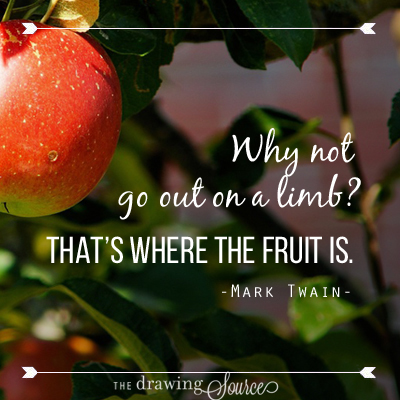
The
purpose of this exercise is to become aware of your tendencies, so that you can
analyze why they are your tendencies,
and whether or not they are relevant and effective in expressing your intended
message.
Once you have written your list of 10 tendencies, ask yourself:
- Did
I choose this tendency?
- Why?
- Did I adopt it from somewhere or someone unconsciously?
- Is it still (or was it ever) relevant to what I am making or trying to say?
In asking these questions, we put ourselves in a position to evaluate what we
are currently doing, and how can we do it with more meaning, impact, and
intent.
Next:
Next to each tendency, write down an alternate way of approaching this particular
aspect of your drawing. Evaluate whether or not this new approach would communicate what you want to express better than the former one, and then – test this new approach in your next drawing!
Exercise 4: Make the work that you want to see
Imagine yourself standing in your favorite museum or gallery. You have just come across an artwork that resonates with you more intensely than any artwork you have ever seen. You stand in front of it completely mesmerized and captivated.
If you were to picture this "ideal artwork," what qualities would it have?
Visually:
What does it look like?
What is the medium?
Is it in color?
If so, what is the color palette?
Are the colors vibrant or subdued?
What size is the work? So grand that it towers over you, so that even its size alone is awe-inspiring? Or so minute that you must walk up to it to see it, and have an intimate experience observing it at close proximity?
Content:
What is the subject matter?
Is
it cheerful? Morose?
Emotion: (The most important element.)
What does this work make you feel? What do you experience when you view it?
If you're unsure, try posing these questions instead:
What do you want to feel when you look at a work of art?
How
do you want it to affect you?
(Bonus: This question can be helpful in determining what you think the purpose of art is.)
Perhaps you want to feel uplifted or motivated. Maybe you want to feel centered, or a deep-seated peace. Perhaps you want art to show you an element of the world in a way that you haven't seen before. Maybe you want to feel woken up, as if your eyes have been opened and you have gained a new awareness of something.
It can be anything, and only you can decide how you want to feel. Your answer is the only correct answer in this scenario (how often does that happen?).
In
answering all of these questions, try to be as specific as you can. As you do
this exercise, I suggest writing down or sketching whatever comes to you. Take
some time to clarify your ideas, and then…
Make it!
Create your ideal artwork.
You may not create exactly what you envision on your first try. Your drawing may morph and shape into something quite different from what you intended or imagined, as artworks often do.
However, you will be at least a step closer to creating that artwork, and in the process you will learn about yourself and your views on the role and purpose of art.
Exercise 5: Create a gallery of your favorite artwork
Compile
images of your favorite artwork into a folder. Select works that entrance you, and
that you return to look at time and time again when you need to be uplifted and
inspired.
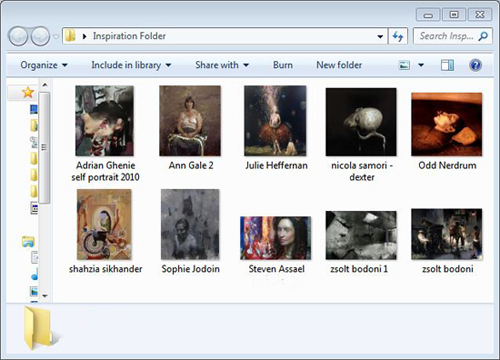 Example of an "inspiration folder"
Example of an "inspiration folder"
Once
you have compiled the images in a kind of “inspiration folder”, look through
them as a group and consider:
- Are there any recurring ideas and themes throughout the works
that you have amassed (even though they are works of various artists)?
- What are
the recurring themes?
- What else do the works have in common – do they make you
feel a certain way, do they have similar subject matter, aesthetic, etc?
Take some time to journal about this and come up with 5 to 10 ideas.
The recurring themes that emerge in the works you selected are most likely ideas that resonate with you, and that you may be interested in exploring as well.
How can you explore these ideas in your own way, in a way that would be personal and specific to you?
Or – how are the works in your inspiration folder different? What various qualities in these works, different as they may be, resonate with you the most? Could these divergent qualities be combined in a fresh, interesting way?
If
you are concerned that developing drawing ideas in such a way will cause them to be
derivative, try to remember that:
"All work is influenced by other work. All people are influenced by other people. No man is an island and no piece of art is a continent unto itself.
When we respond to art we are responding to its resonance in terms of our own experience. We seldom see anew in the sense of finding something utterly unfamiliar. Instead, we see an old in a new light."
-Julia Cameron, The Artist's Way
Everything
comes from somewhere. We cannot create in a vacuum, and everything is derivative
in some way. However, the more influences we have to look at, the more elements
we can store in our visual vocabulary to later re-combine in ways that feel
uniquely our own.
The Balance Between Idea Creation and Execution
There
is a balance to be struck between idea creation and execution (the actual act
of drawing).
Much of this site addresses how to improve your technical drawing skills - the way that you execute your drawing. However, because there is so much to learn in the realm of technical drawing, it can be easy to fall down the proverbial rabbit hole of drawing technique and forget entirely that drawing is, first and foremost, a creative opportunity for self-expression, self-exploration and communication.
Even while working specifically on technique, it is important to check in with the “what, why and how” of our creative decision-making.
If you are just beginning to draw, are immersed in technical training, and don’t yet feel equipped to tackle complicated subject matter, I still encourage you to work through these exercises in order to begin discovering what truly interests you, and what you feel compelled to explore.
These internal investigations will inform how you approach your study of technique, and illuminate the specific skills you need to acquire in order to be able to express what you truly wish to communicate.
Happy Drawing,
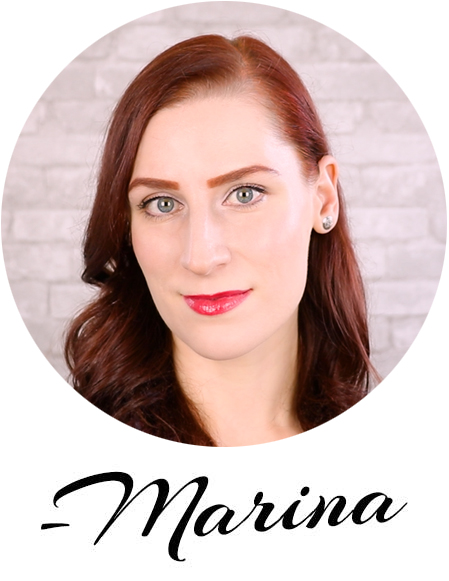
Enjoyed this page? Please share it!
Share buttons and pinnable images below:
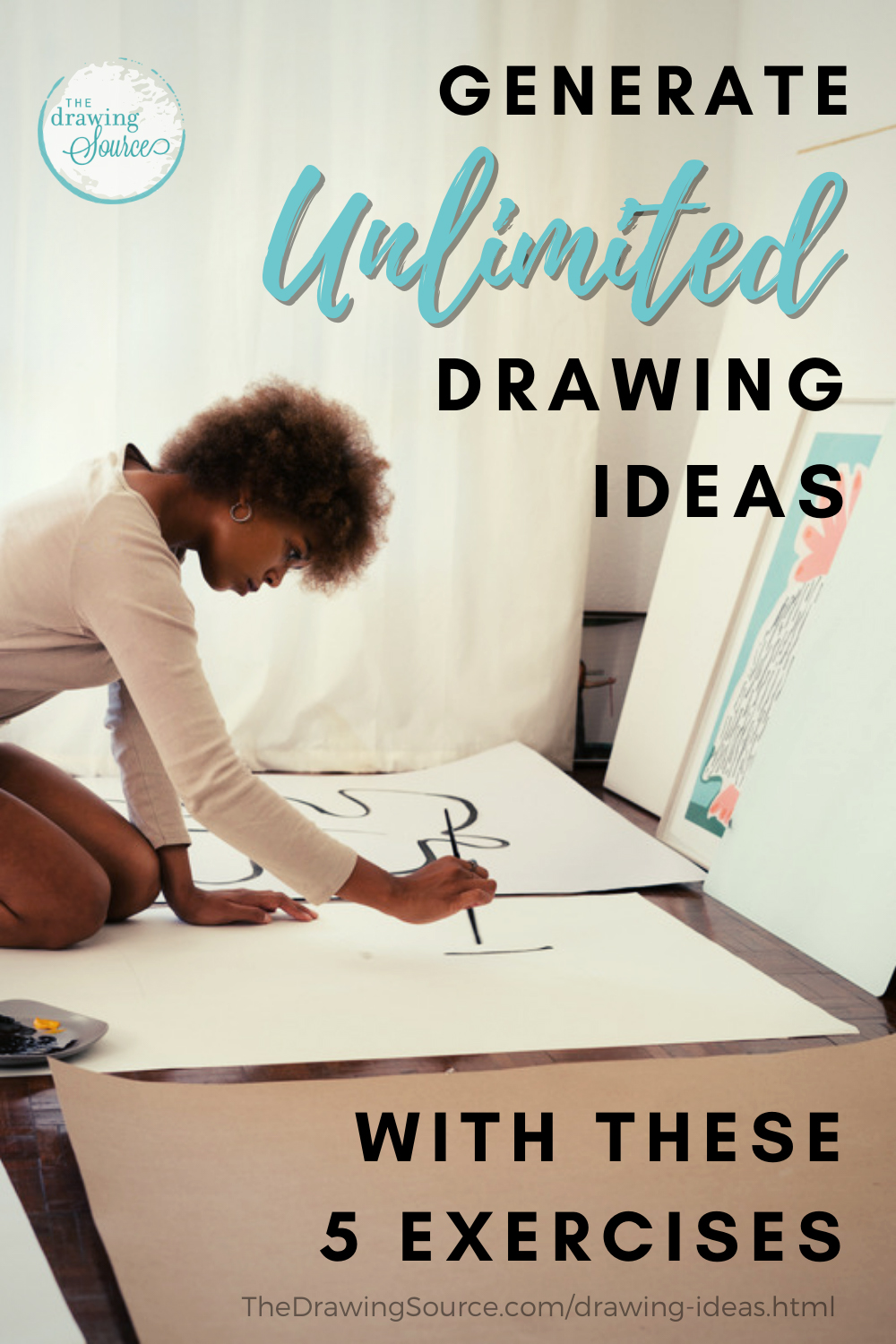
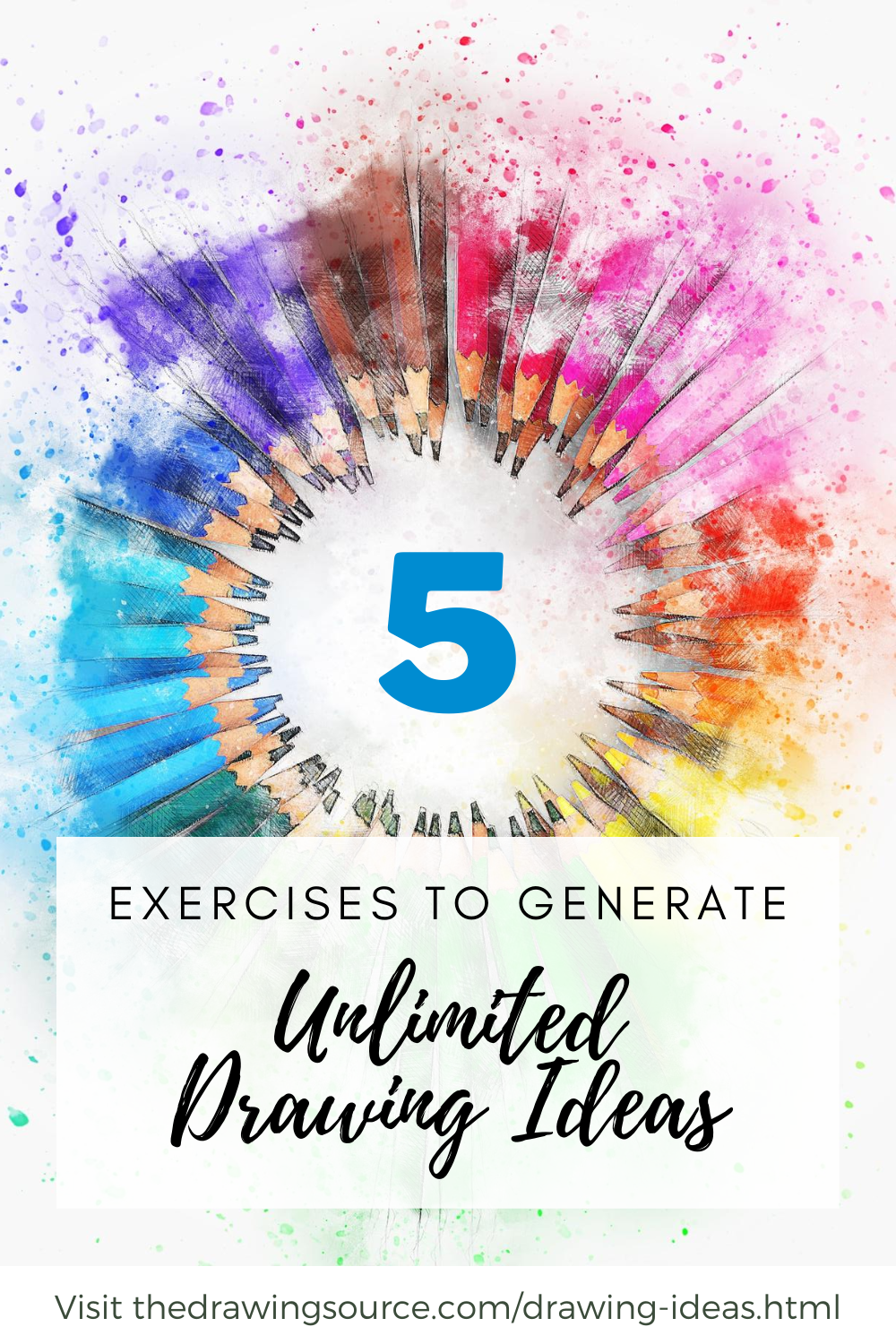
If you enjoyed this page, you may also be interested in:
Related Pages
30 Ideas for Drawing (While in Isolation)
The Inspiring Drawings of Alphonse Mucha
100 Self-Portrait Drawings from 1484 to Today
Return to Inspirational Drawings from Generate Unlimited Drawing Ideas
Return to the Homepage from Generate Unlimited Drawing Ideas
